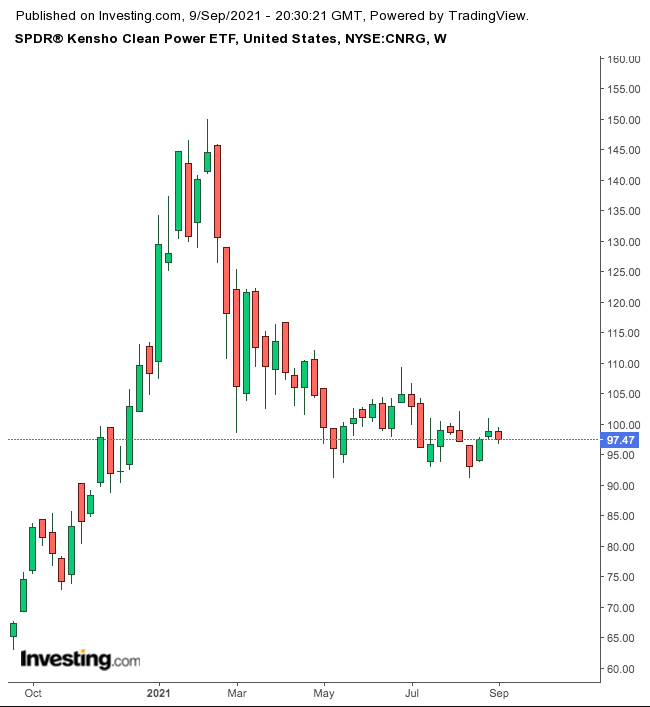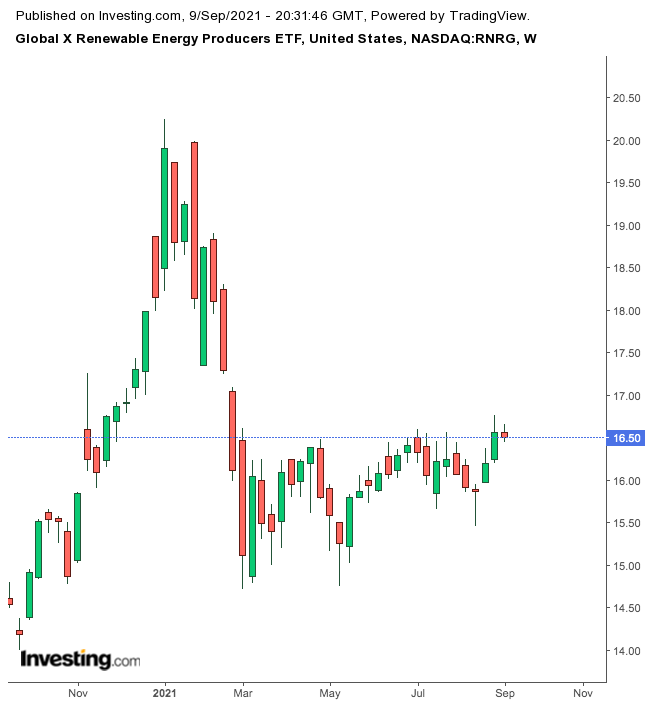Hurricane Ida brought attention to energy markets, as "150-mph winds crippled a Louisiana electric grid." Extreme weather patterns due to climate change as well as the devastation they cause, seem to be part of the new global reality.
This new reality is highlighting the need to develop renewable and sustainable energy sources, and environmental associations, utilities, government agencies and individuals have joined the debate on how renewables could shore up power supplies.
According to the International Energy Agency (IEA), global alternative energy capacity grew by 45% from 2019 to 2020. The growth rate, especially in wind and solar energy capacity, was impressive despite the coronavirus pandemic.
The IEA stated:
"This expansion exceeds the record-level annual capacity additions of 2017-2019 by over 50%, such that renewables are expected to account for 90% of total global power capacity increases in both 2021 and 2022."
Other reports also indicate that alternative energies comprised the only energy source in which demand increased last year, while consumption of other fuels declined. Decreasing costs in the green energy space have also helped increase their use. In addition, clean energy has strategic importance for US President Joseph Biden’s administration amidst growing consideration for the environment.
Therefore, today we discuss two exchange-traded funds (ETFs) that could be appropriate for investors who want to benefit from increased demand levels on renewable energy sources.
1. SPDR S&P Kensho Clean Power ETF
Current Price: $97.47
52-Week Range: $60.11 - $150.00
Dividend Yield: 0.75 %
Expense Ratio: 0.45% per year
The SPDR® Kensho Clean Power ETF (NYSE:CNRG) invests in global firms that derive revenues from involvement in clean energy. These companies are typically involved in innovation in solar, wind, hydroelectric and geothermal power. The fund started trading in October 2018,

CNRG, which has 43 holdings, tracks the S&P Kensho Clean Power Index. The top 10 names make up about 30% of net assets, which stand at $367.5 million. In terms of sectors, we see electronic components and equipment (18.19%), followed by electric utilities (15.67%) and semiconductors (13.99%). Close to 74% of the businesses are U.S.-based. Next in line are those from China (8.19%), Canada (7.73%), Brazil (3.99%) and others.
Leading holdings in the roster are the electric vehicle heavyweight Tesla (NASDAQ:TSLA); First Solar (NASDAQ:FSLR), which provides photovoltaic solar energy solutions; China-based JinkoSolar (NYSE:JKS); energy technology group Enphase Energy (NASDAQ:ENPH), which provides solar plus storage solutions; and Array Technologies (NASDAQ:ARRY), which manufactures ground-mounting systems used in solar energy projects.
Although the fund returned 54% in the last 52 weeks, it is down close to 11% this year. CNRG hit a record high in February, but has come under pressure since then. Potential buy-and-hold investors could consider investing around these levels.
2. Global X Renewable Energy Producers ETF
Current Price: $16.50
52-Week Range: $14.0 - $20.25
Dividend Yield: 2.57%
Expense Ratio: 0.65% per year
The Global X Renewable Energy Producers ETF (NASDAQ:RNRG) invests in companies that produce energy from renewable sources, including wind, solar, hydroelectric, geothermal and biofuels. The fund was first listed in May 2015.

RNRG, which has 44 holdings, tracks the returns of the Indxx Renewable Energy Producers Index. The fund’s top 10 holdings comprise nearly half of net assets of $143.7 million.
Utilities make up the highest portion, with 89.9%, followed by industrials (6.5%) and materials (2.3%). About 13% of businesses come from the U.S. Next in line are firms from New Zealand (10.2%), Canada (8.9%), Brazil (8.6%) and Spain (7.4%).
Austria-based electricity utility Verbund (OTC:OEZVY); Spanish renewable energy group EDP Renovaveis (OTC:EDRVF); Denmark-based (OTC:Orsted (OTC:DNNGY), which is well-known for its wind farms; Brookfield Renewable Partners (NYSE:BEP), which owns assets that generate electricity from renewable resources; and solar energy solutions provider Sunrun (NASDAQ:RUN) lead the names in RNRG.
Many countries have strict emissions targets. As a result, we can expect the global shift toward renewable-sourced energy to increase.
Over the past year, the fund is up almost 13%, but declined 9% in 2021. It hit a record high in early January. Interested readers could find value around these levels.
